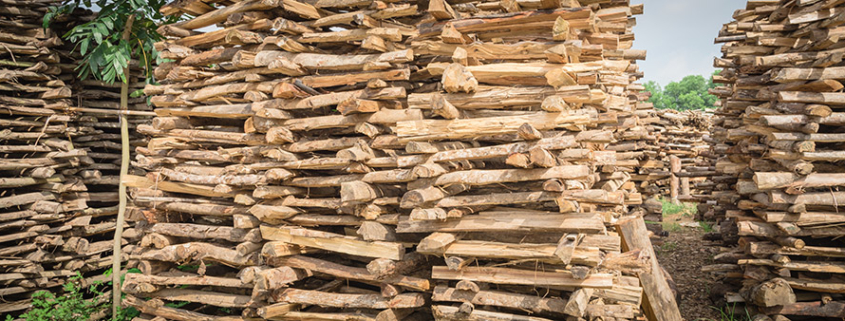Six Questions to Ask When Buying Firewood for Wood Burning Stoves
With surely what is a wide array of firewood to choose from for your wood burning stove, it can be a challenge to know what’s your best option. However, there is one constant; everyone wants the best quality firewood for the best price, right?
So, how do you learn this? By asking questions. The more you know, the better informed you’ll be to make the right decision. You might contact a supplier and be sure that you want to burn red cedar, only to discover that it emits the lowest heat energy, or you may have a budget or at least an idea of how much that you want to spend, only to discover that the firewood you want is much cheaper than you thought!
But what if you’ve only just invested in a wood burning stove or moved into a new property with a wood burner and have about as much knowledge of wood burners are you do about Tibetan culture?
Well, fear not !
Here’s a list of six questions you need to ask when buying firewood for wood burning stoves.
The Price
Depending on the type and quantity of firewood you’d like, the individual retailer – even where you live in the UK, the price will change. Now we’re not saying that you’ll likely see a huge difference if you’re buying firewood in West London compared to The Wirral, but sure, prices will likely be different.
Always check if the price quoted includes delivery or not – or if the retailer even delivers. Though the delivery price will hardly be extortionate, it’s always best to double-check how much it costs. Make sure the retailer does deliver, after all, you don’t want to be sitting around expecting your delivery when you need to collect it yourself.
Also, if you need a lot of firewood, consider buying in bulk – it’s cheaper! You also save yourself returning to the same retailer a short while later to buy more.
The Quantity
Always try to buy firewood by volume. Don’t buy wood by weight. Why? Some logs have a higher moisture content which means they’ll be heavier and therefore you probably won’t get exactly the quantity you expect.
Where possible, try to buy in cubic metres. Most suppliers will sell firewood by the bag or load. Always ask the size. Knowing the size will help you to calculate how long the amount of firewood you’re buying will last. You never know you might need much more or much less than you originally thought.
Top tip: bag sizes can vary enormously. A standard bag size for one retailer might not be the same for another. If you’re buying firewood from more than one retailer, always check their bag sizes.
The Size of the Logs
The size of the logs is equally important to check. Why? You may find that the size of your wood burning stove is too small to fit the size of the logs you’ve bought (this happened to my sister-in-law and so had to saw each individual log). You don’t want to come home only to find that you can’t fit the logs inside your wood burning stove and then saw or split each again yourself.
However, there’s another important reason to ask about the size of the logs. For an efficient burn, logs should ideally be split to 100-120mm (or 4-4.75 inches). Not only does this diameter help logs to dry quicker, it helps them to burn more efficiently.
The Moisture Content
Arguably, the most important question to ask a log supplier when buying firewood for your wood burning stoves is the moisture content of the logs. Dry logs will have an efficient, consistent burn. Freshly felled wood that’s been stored in a dry environment for six months to two years will have much less moisture than logs that have stored for a considerably shorter period in a damp environment.
Always check the storage method with your log supplier. For some it may be almost impossible to keep logs 100% dry for months or even years at a time. Others may have the facilities to effectively dry out and season the logs.
When visiting a supplier, if you spot a load of logs stacked, you can always pick up one or two to see how much moisture they hold.
Ideally, the logs should be kiln dried and have a moisture content less than 20%. Soon legislation with ensure this low moisture content is mandatory.
Seasoned or Unseasoned?
It’s not entirely uncommon for people to assume that you simply cut down a tree and chop the wood into small piles. The reality couldn’t be more different. The wood needs to be seasoned (stored until the water content is reduced to below 20%.)
Always ask the log supplier if the wood has been seasoned. Why? Depending on the season, the water content can be anywhere from 35-60% when first cut down so for a warm consistent burn it needs to be seasoned for at least six months.
Can you use unseasoned wood? Well yes, but because it hasn’t been seasoned, the water content will prevent the wood from burning as hot as possible and you won’t get the same level of heat or efficiency. The burn is not efficient and more emissions are released from wood that has not been seasoned or kiln dried.
Top tip: remember that some firewood has more moisture content than others. Hardwoods, like maple and oak have less moisture than softwoods like cedar and pine. If you’re in any doubt about a wood’s moisture content, ask the retailer.
A Sustainable Source
Deforestation is a major environmental problem that affects us all. When trees are cut down, their stored carbon is released into the air as carbon dioxide. This contributes to global warming and according to best estimates, deforestation is responsible for up to 10% of all global warming emissions.
When large patches of forests are cut down and the trees never replaced, greenhouse gases are increased. Moreover, species that call the forest home are displaced and this too can have a devastating effect on our ecosystem.
It’s always wise to check with a retailer that their firewood has been sustainably sourced. You may not consider yourself an eco-warrior, but we all must do our part for the planet for a better future, right?
If you’ve any other questions that you’d like to ask that we haven’t covered, call us today on 0333 300 1299. We’d be happy to answer them for you.





Leave a Reply
Want to join the discussion?Feel free to contribute!